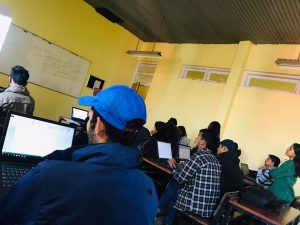
Self-Healing Concrete
by Shekhar Nath Chapagain (072BCE041) (Sagarmatha Engineering College) Self-healing concrete is a special type of concrete invented by a group of microbiology researchers under the

Stay Updated with the Latest Notices
Your go-to hub for announcements, events, and important updates from CESS.

by Shekhar Nath Chapagain (072BCE041) (Sagarmatha Engineering College) Self-healing concrete is a special type of concrete invented by a group of microbiology researchers under the

Editorial by Prakash Bhandari (073BCE104) Cement is the most widely used construction material worldwide. Site civil engineers (who have the responsibility for quality control) and
Auto CAD class will start from 25th of Mangsir. It will be on two shift i.e Evening Shift(4:00-5:30PM) and Morning Shift(8:00-9:30). Hope Maximum will take

Believing Word Package as a important tool for Civil Engineers, we organize three days workshop training on MS office from Dec 3 to 5( Mangsir
Please fill up the provided form and support us. Honest opinions are highly appreciated. Shout out will be given to the best and relevant opinion

A huge congratulations to Pulchowk Football Team (Civil) for lifting up the “2nd All Nepal Civil Engineering Football Cup” organized by Kathmandu University Civil Engineering

Pulchowk campus enters the finals of on going All Nepal Civil Cup currently being held at Kathmandu University(KU) following a comfortable 1-0 win over NEC.

Team Pulchowk into the Semis, congratulations!!#Civil_Cup #KU Post Views: 6,230

Congratulations Team Pulchowk (Civil) for entering into the Quarter !! Next Match with Advance College of Engineering, 12: 00 pm, 4 Dec. at KU ground!
We, CESS-Nepal, are organizing a training program on Auto-CAD and Civil-3D from next week. We have two training courses, namely AutoCAD which charges only RS.